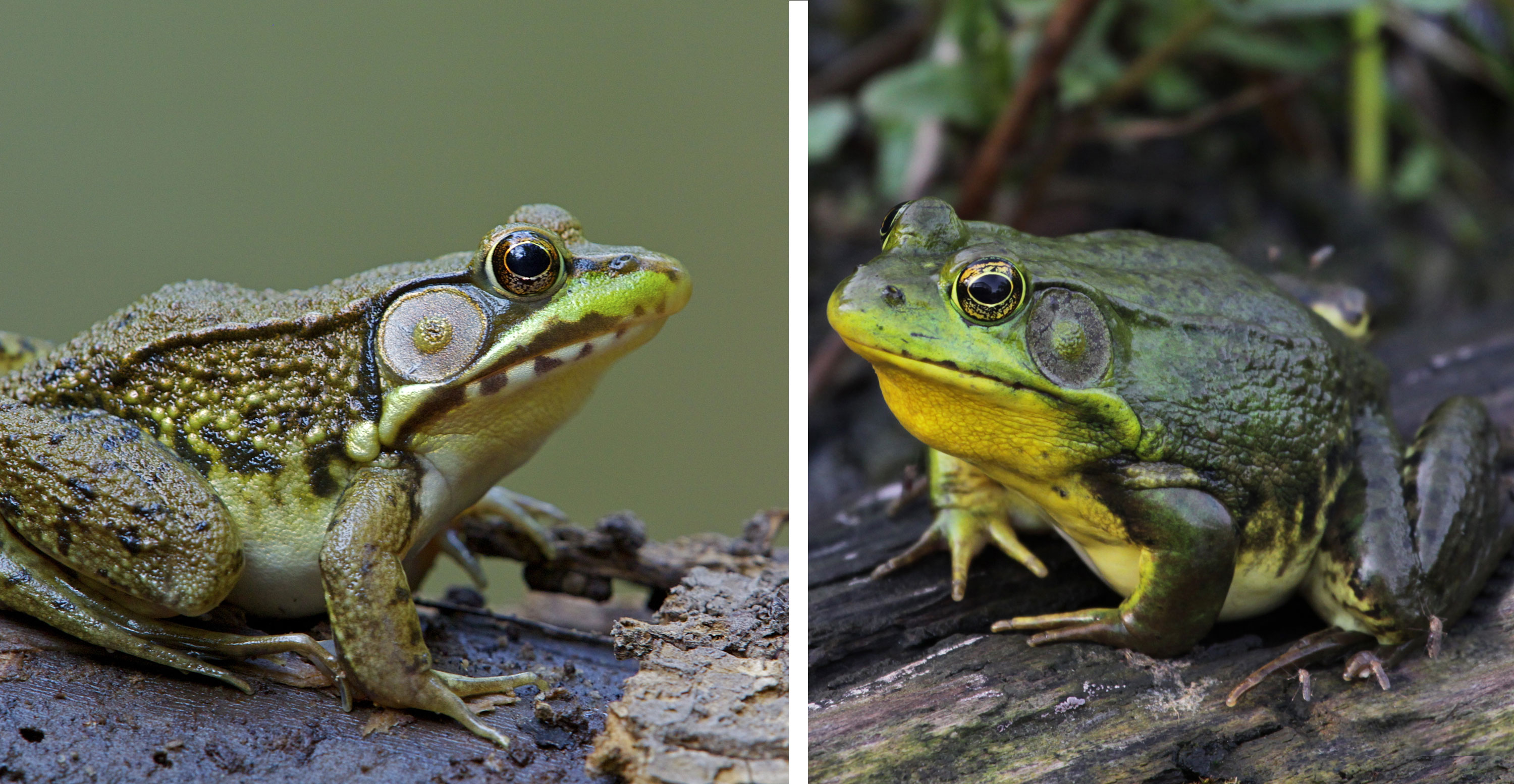What's the difference?: Green frog vs. bullfrog

Illinois is home to several frog species, but two of the largest — the green frog and the American bullfrog — look and act similar enough that they can easily be confused with one another.
Both can live in a variety of freshwater habitats, like lakes, ponds and rivers, and both prefer aquatic habitats with plenty of vegetation such as reeds, grasses, shrubs and trees. So how, then, can you tell the difference between these two frogs? While the two are similar, there a few ways to tell them apart if you can get a good look — or listen.
Size is one distinguishing characteristic between the two frogs, but it might be hard to judge the difference in size if they aren't side by side. Bullfrogs are the bigger of the two frogs, growing to be as long as 8 inches, while green frogs are usually about 4 inches long, according to Animal Diversity Web. Bullfrogs are also considerably heavier, sometimes weighing more than 1 pound, while green frogs typically weigh between 1 ounce and 3 ounces.
While color can often be a useful tool for distinguishing animals in the wild, it won't be of much help with bullfrogs and green frogs. While only the green frog includes a reference to its color in its common name, both frogs are, in fact, green — and similar shades of green at that. Both are green, dark green or brownish green in color, and both can look speckled, blotchy or warty in appearance.
But if you able to get a good look at the frog's color, you might also be able to see another key difference between these two species. Both frogs have ridges, or folds, of skin, but not in the same location. To determine if you are seeing a bullfrog or a green frog, first look for the tympanum, a circular structure that serves as the frog's eardrum. A frog's tympanum is behind its eye. Bullfrogs have a ridge of skin that goes from the back of the eye around the tympanum, according to the New York Department of Environmental Conservation. Green frogs have a ridge too, but theirs are much longer, extending all their way down their backs.
The tympanum itself is also a useful identification feature, but for gender, not species. Both bullfrogs and green frogs have this eardrum, but it is larger in male frogs than females. If the tympanum is larger than the frog's eye, it is a male, according to the Minnesota Department of Natural Resources. If it is the same size or smaller than the eye, it's a female. Other frogs for which this tympanum trick works include gray tree frogs and Cope's gray tree frogs.
Aside from differences in their physical appearance, you can also hear the difference between a green frog and a bullfrog. Bullfrogs have a long, deep call that sounds like they are calling "jug-o-rum, jug-o-rum," according to the New York Department of Environmental Conservation. Green frogs have a short, high-pitched, one-note call that might sound like a guitar string being plucked.
Among the things the two frogs have in common is their diet. Both are mainly carnivorous, eating mostly other animals, although they will sometimes eat algae and other aquatic vegetation. Green frogs will eat nearly anything they can fit in their mouths, but they mainly eat fish, snails and moths, Animal Diversity Web reports. Bullfrogs, too, eat fish, along with worms, snakes, insects, crustaceans and other amphibians. They will also sometimes eat other bullfrogs as well as green frogs.
